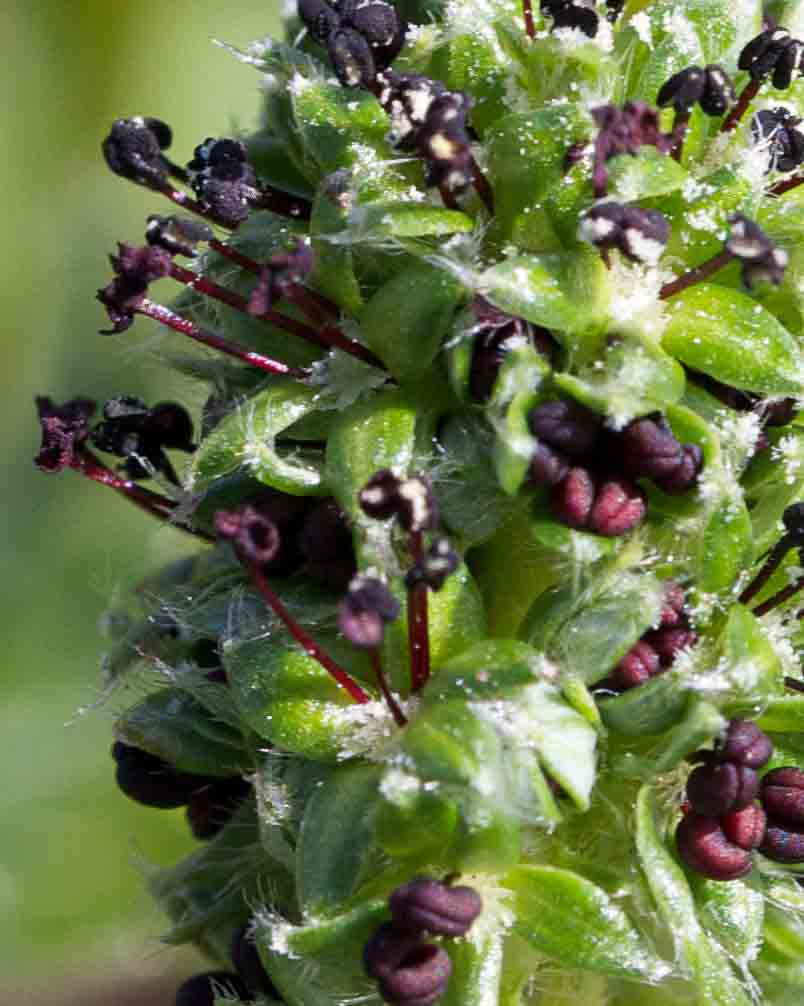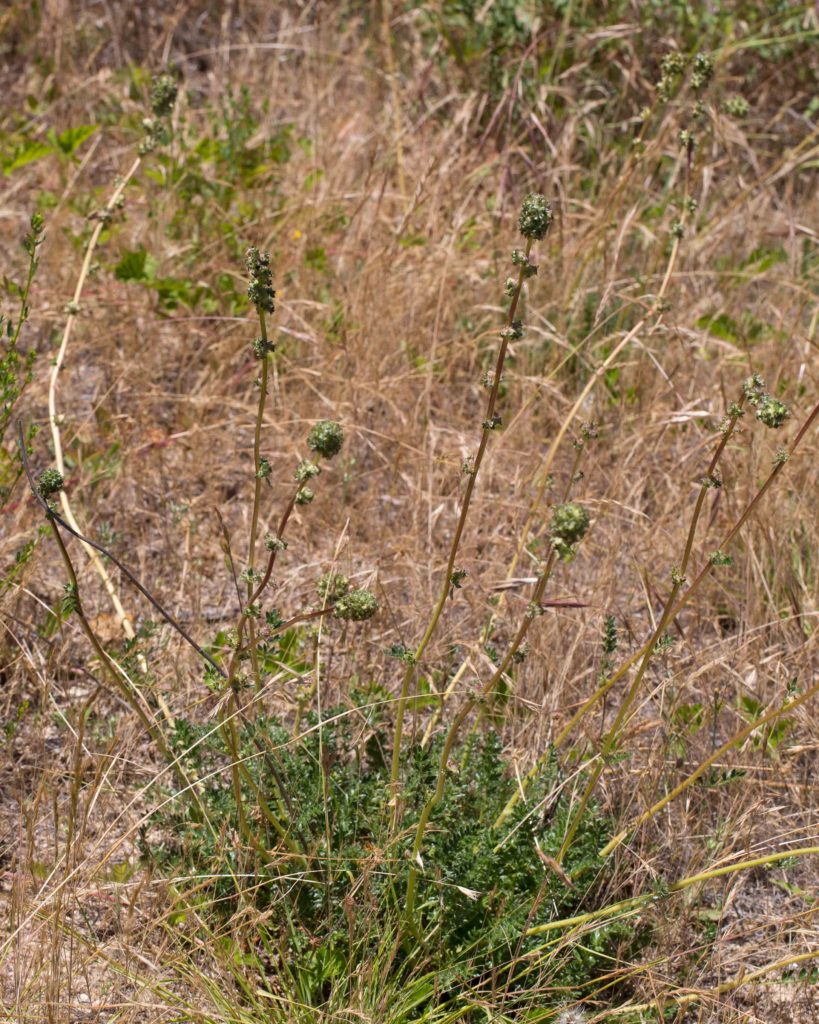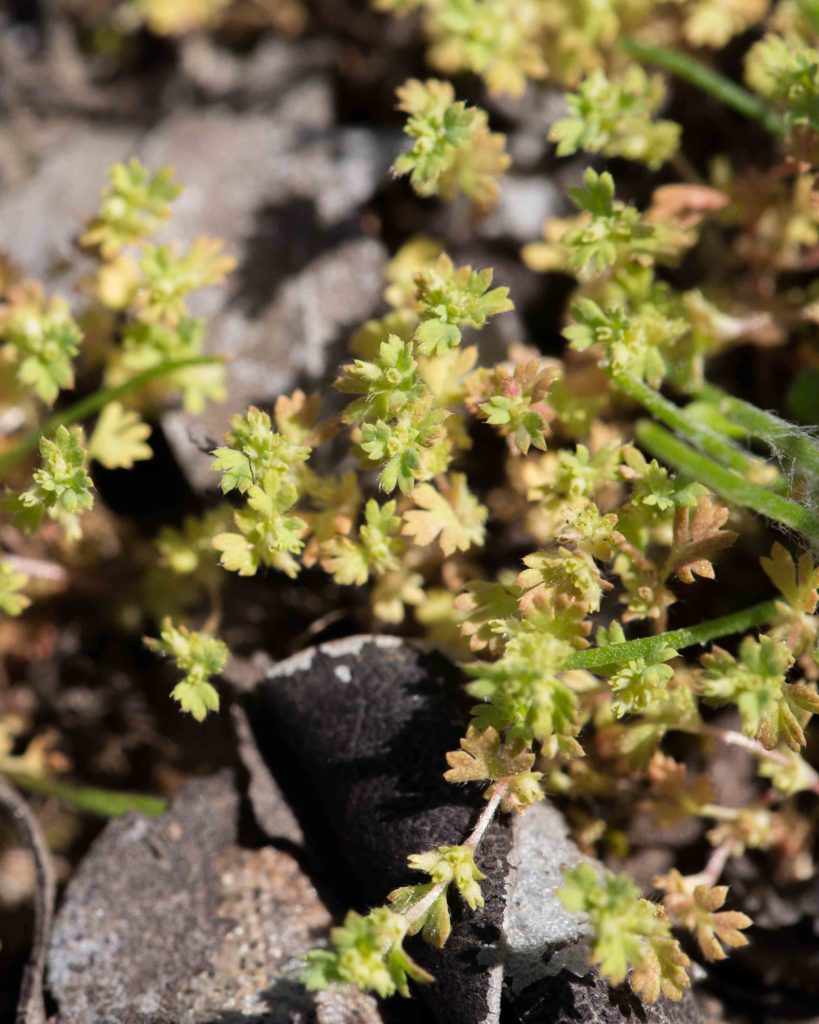Rosaceae: Rose Family — Miscellaneous
Plants in the Rose family include many of our best-loved ornamentals and fruits. The flowers usually have 5 petals, 5 sepals and numerous stamens, attached to a saucer- or bowl-shaped hypanthium. Often the oval leaves are toothed, and there is a stipule at the petiole base.
California Acaena – Acaena californica
Blooms:
Mar–May
Plant Height:
10–60 cm
Flower Size:
Small cluster
Origin:
Native
Habitat:
Dry grassy slopes near coast
Notes:
A somewhat undistinguished plant, this has ascending to erect stems topped with a dense spike of flowers. It has no petals, but there are 4 (occasionally 5) green sepals. The stamens (generally 4) are purple-black, well exserted beyond the sepals. Most leaves are basal, in dense clumps. Individual leaves are 3–12 cm with 5–8 lance-linear leaflets per side.
Lady’s Mantle – Aphanes occidentalis
Blooms:
Mar–May
Plant Height:
Stem 2–10 cm
Flower Size:
Very small
Origin:
Native
Habitat:
Open grassy or wooded places
Notes:
This is a very small, prostrate annual with distinctive fan-shaped leaves about 1 cm across. It has tiny greenish-yellow flowers. Not uncommon, but easily overlooked.
Garden / Small Burnet – Poterium sanguisorba
Blooms:
Mar–June
Plant Height:
20–50 cm
Flower Size:
Small cluster
Origin:
Native
Habitat:
Open grassy or wooded places
Notes:
This is similar to California Acaena (Acaena pinnatifida var. californica, see above) in its general appearance, with ascending to erect stems, topped with a small, dense inflorescence. The inflorescence is more head- than spike-like, and the flowers are more variable. They may be either bisexual (with many thread-like stamens tipped with creamy-yellow anthers and a small, bushy red stigma at the base) or female only (with a larger, exserted, bushy red stigma). The leaves are pinnate, oval and much toothed. The leaves were once popular in salads, and the plant was introduced into the USA by early English settlers.











